Temple of/in Man

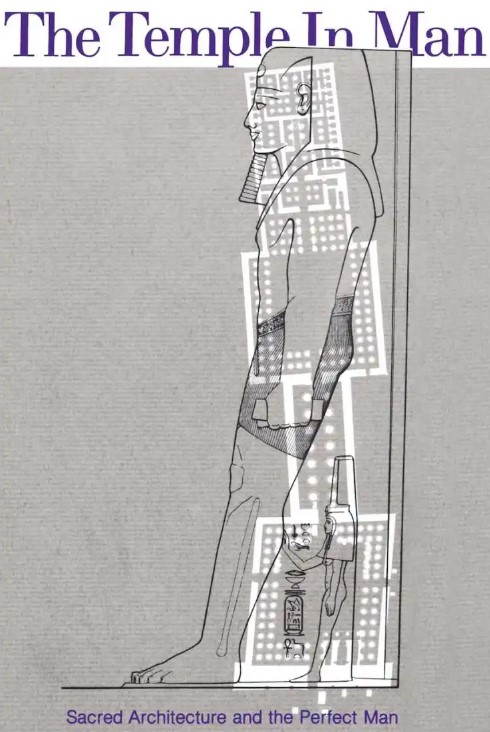
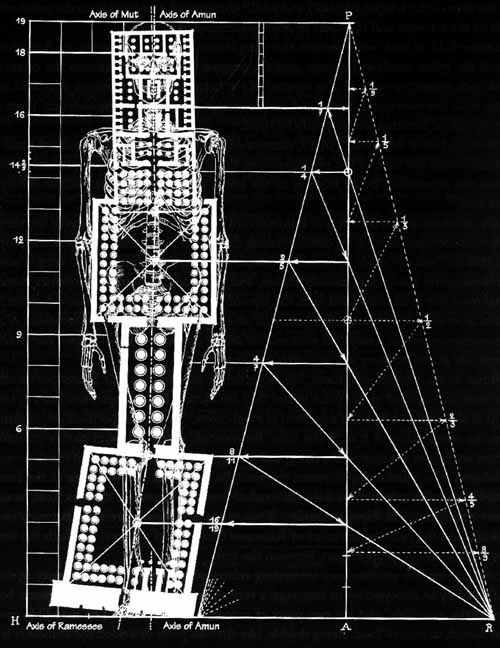
R.A. Schwaller de Lubicz (1887-1961) was a French chemist and esoteric researcher who’s credited with developing the symbolist interpretation of ancient Egypt.
Schwaller's main focus was the Temple of Luxor:
He meticulously studied the temple from 1936-1951. He measured every part of it, including the bas-reliefs:
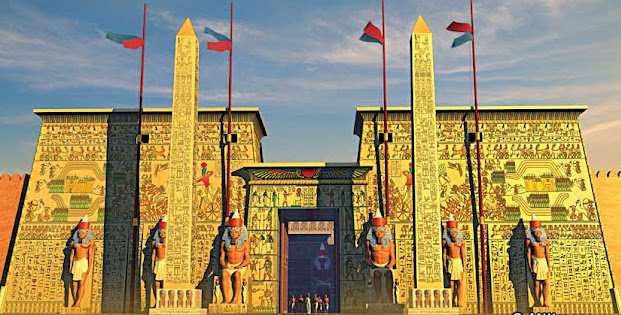
He proved that the ancient Egyptians had a very deep understanding of things like astronomy and human anatomy.
Rather than write this knowledge down in texts accessible to the masses, the Egyptians conveyed their teachings through symbols, as symbolism is the most effective way to present abstract ideas related to universal laws.

His first short book is called The Temple in Man.
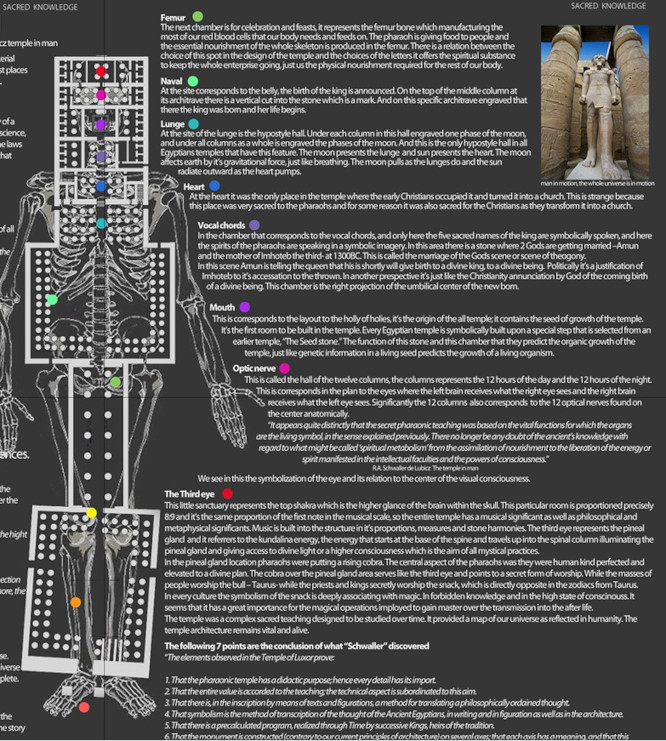
He then followed up with a massive 1,000+ pages volume called The Temple of Man:
These 2 monumental volumes represent the most important breakthrough in our understanding of Ancient Egypt since the discovery of the Rosetta stone. This exhaustive and authoritative study reveals the depths of the mathematical, medical, and metaphysical sophistication of Ancient Egypt:
Schwaller de Lubicz's stone-by-stone survey of the temple of Amun-Mut-Khonsu at Luxor allows us to step into the mentality of Ancient Egypt and experience the Egyptian way of thinking/feeling within the context of their own worldview.
His study finds the temple to be an eloquent expression and summary, like an architectural encyclopedia, of what the Egyptians knew of humanity and the universe:
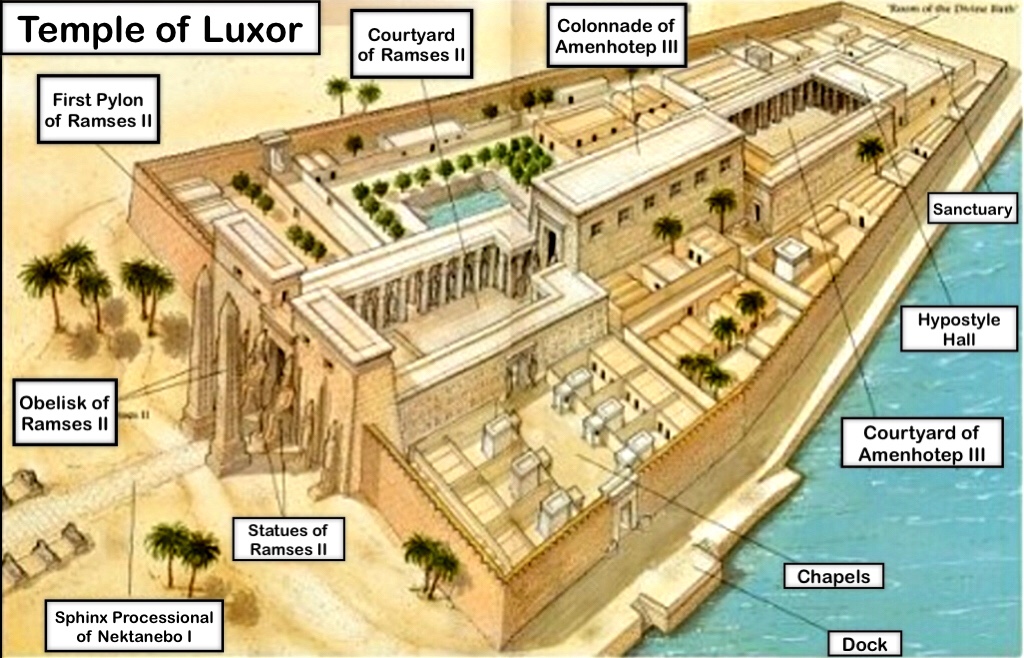
Through a reading of the temple's measures and proportions, its axes and orientations, and the symbolism and placement of its bas-reliefs, along with the accompanying studies of related medical and mathematical papyri, Schwaller de Lubicz demonstrates how advanced the civilization of Ancient Egypt was: a civilization that possessed exalted knowledge and achievements both materially and spiritually.
Hieroglyphs carry hermetic messages that convey the subtler realities of the Sacred Science of the Pharaohs. He effectively demonstrates that Ancient Egypt, not Greece, is at the base of Western science, civilization, and culture.
The Temple of Man is a monument to inspired insight, conscientious scholarship, and exacting archaeological groundwork that represents a major contribution to humanity's perennial search for self-knowledge and the prehistoric origins of its culture and science:
The Human Body and the Golden Ratio φ:
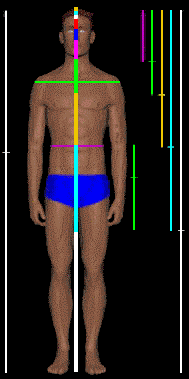
Human body showing the Divine proportion φ:
The Divine Proportion in the Body
- The white line is the body’s height.
- The blue line, a golden section of the white line, defines the distance from the head to the finger tips.
- The yellow line, a golden section of the blue line, defines the distance from head to navel and elbows.
- The green line, a golden section of the yellow line, defines the distance from the head to the pectorals and inside top of the arms, the width of the shoulders, the length of the forearm and the shin bone.
- The magenta line, a golden section of the green line, defines the distance from the head to the base of the skull and the width of the abdomen. The sectioned portions of the magenta line determine the position of the nose and the hairline.
- Although not shown, the golden section of the magenta line + the short section of the green line defines the width of the head and ½ the width of the chest & hips.


